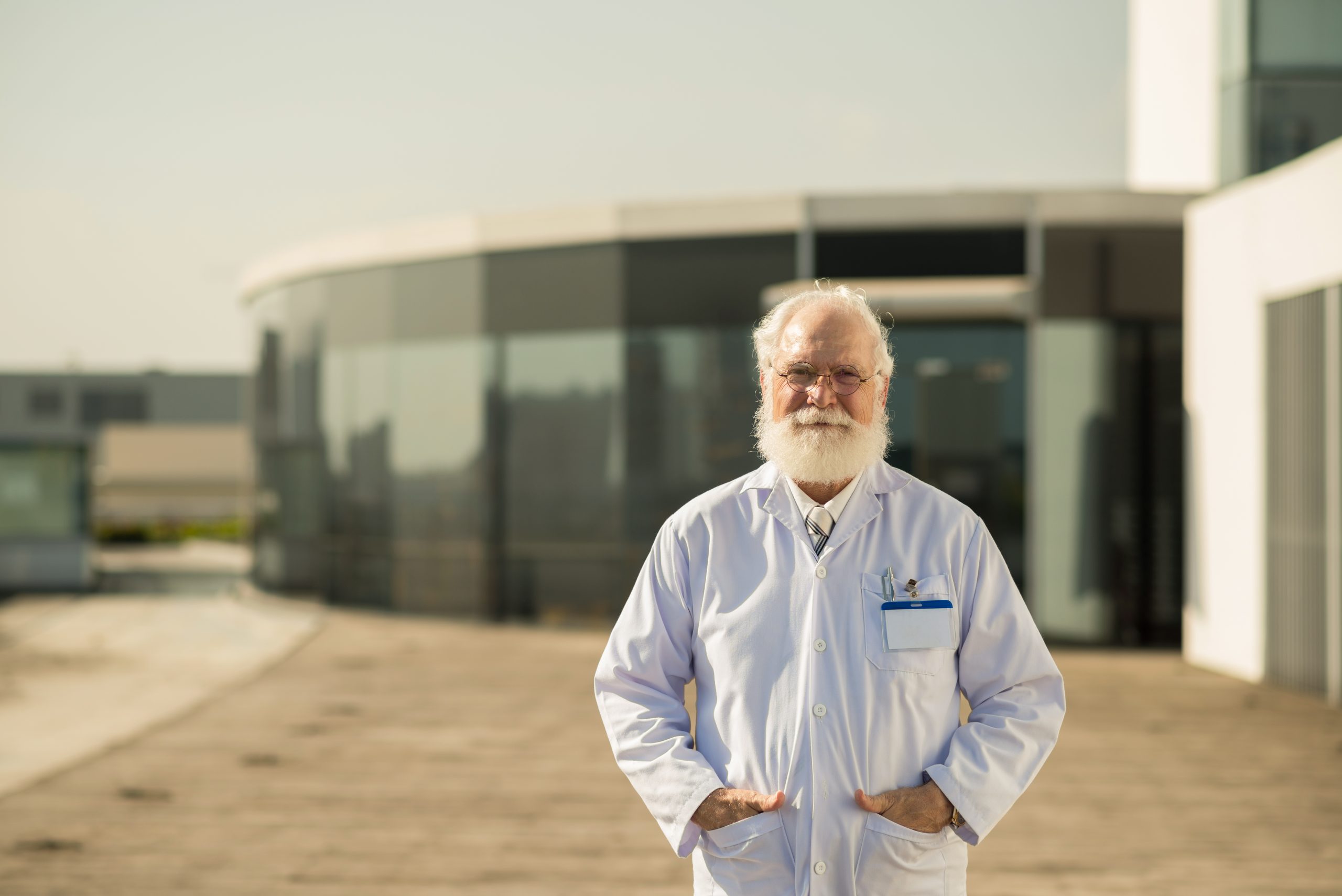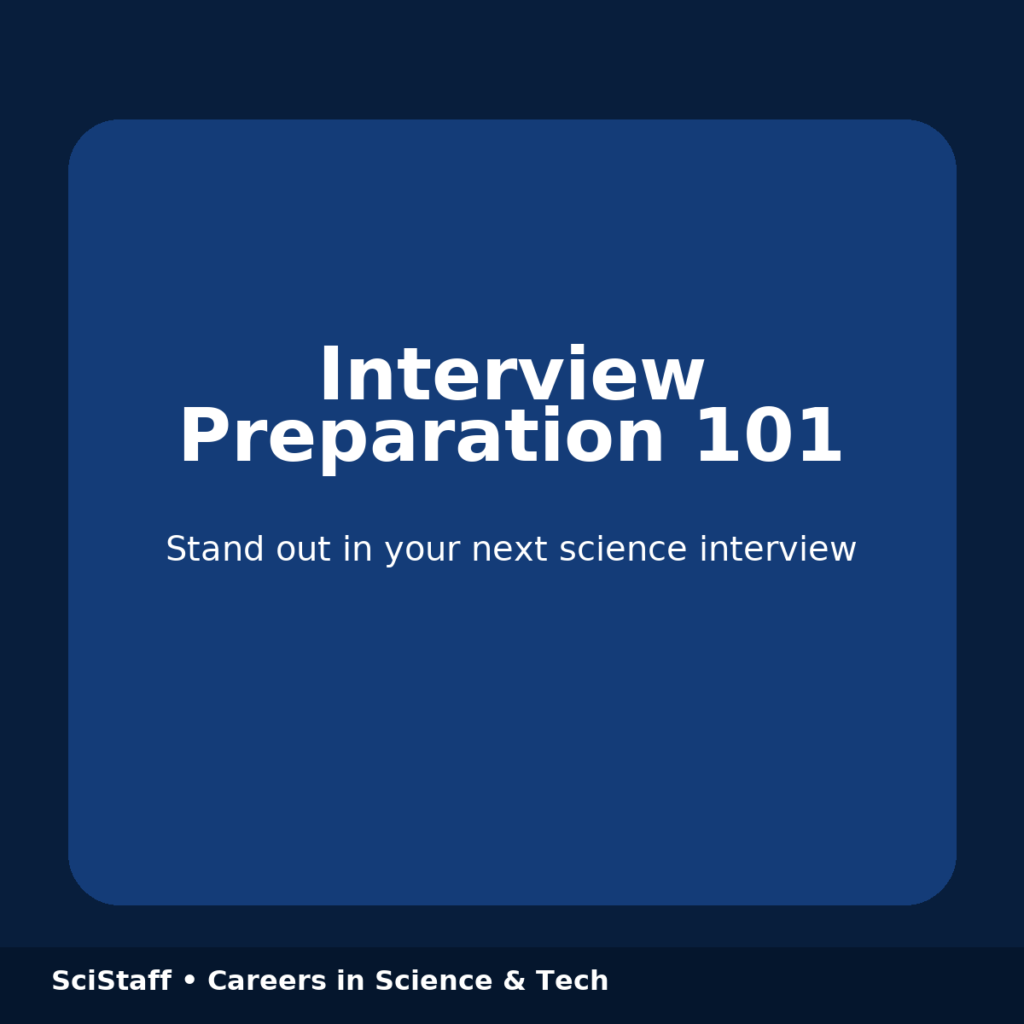
Interviews aren’t exams to survive — they’re collaborative problem‑solving sessions. Hiring managers want to understand your impact, how you think, and whether you’ll be a great fit for the team’s culture and pace. If you prepare with intention (the right research, the right stories, and the right logistics) you’ll walk in calm, clear, and confident.
What Interviewers Are Really Measuring
- Impact: evidence that you deliver results (quality, speed, reproducibility, stakeholder outcomes).
- Fit: how you collaborate, communicate, and handle setbacks.
- Motivation: why this role, this company, and this problem space is of interest to you.
- Judgement: how you prioritise, choose methods, and manage risk.
Your Preparation Timeline (from a week out to showtime)
- 5–7 days out: Read the job spec closely; research the company’s focus areas, pipeline, or product lines; and note 3–5 role‑aligned achievements. If you are unsure of anything, please contact the recruitment consultant that is working with you on this role for any clarification or additional questions you may have.
- 3–4 days out: Draft a short presentation or portfolio, if requested, and refresh key methods/technologies you are skilled in.
- 2 days out: Prepare your questions, confirm interview details, and test or plan logistics (platform, route, parking, etc.).
- Night before: Lay out clothing, test camera/microphone, charge devices, print any required documents, and sleep!
- Day of: Arrive/log in early, warm up your elevator pitch, and breathe slowly for 60–90 seconds before you enter the room.
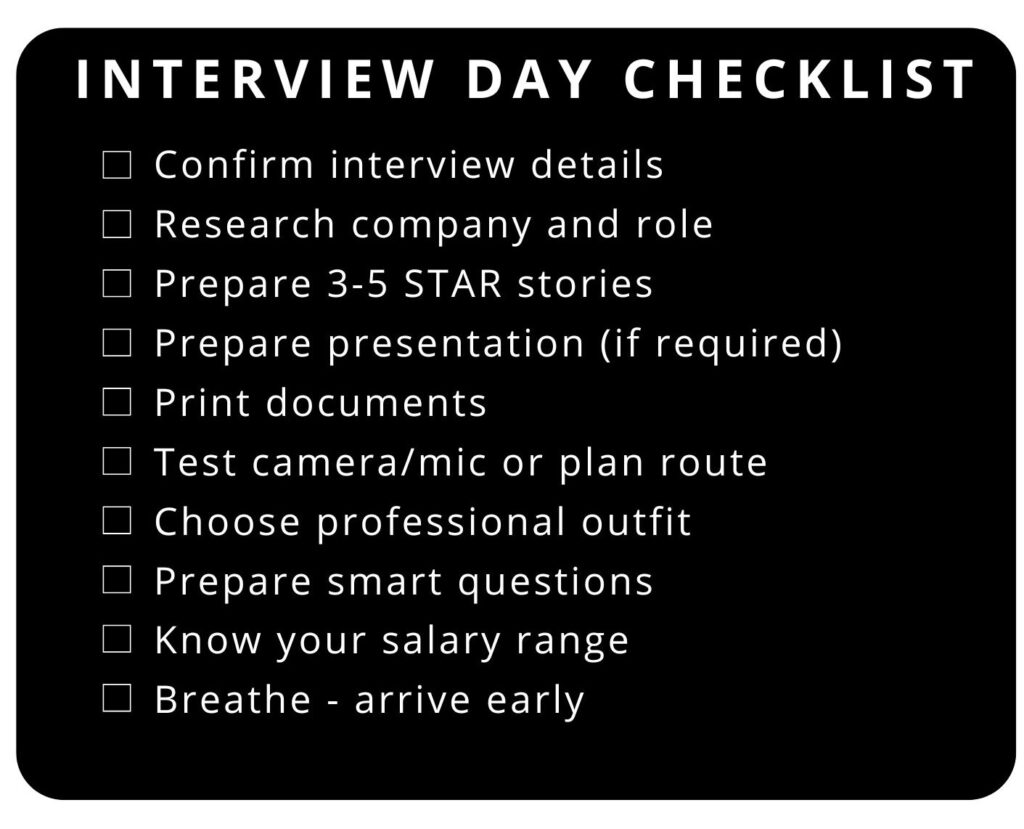
Do Smart Research (beyond the homepage)
- Company: research the company’s mission, latest announcements, partnerships, and publications or patents (if relevant).
- Role: determine the skills that matter most for the role.
- Team: establish where the role sits in the company’s organisational structure, cross‑functional partners, and stakeholders you’ll support.
Build Memorable Answers with STAR(+L)
The STAR (Situation, Task, Action, and Result) method is a structured approach for answering behavioural interview questions that can be useful in all interview situations.
Structure 3–5 stories that map directly to the role. Keep them concise (90–150 seconds each):
- Situation — set the clinical/technical context in one sentence.
- Task — your objective or responsibility.
- Action — methods/tools you chose and why, collaboration, and constraints.
- Result — quantify outcomes (throughput, turnaround time, accuracy, savings, etc.).
- Learning — the principle you’ll apply next time.
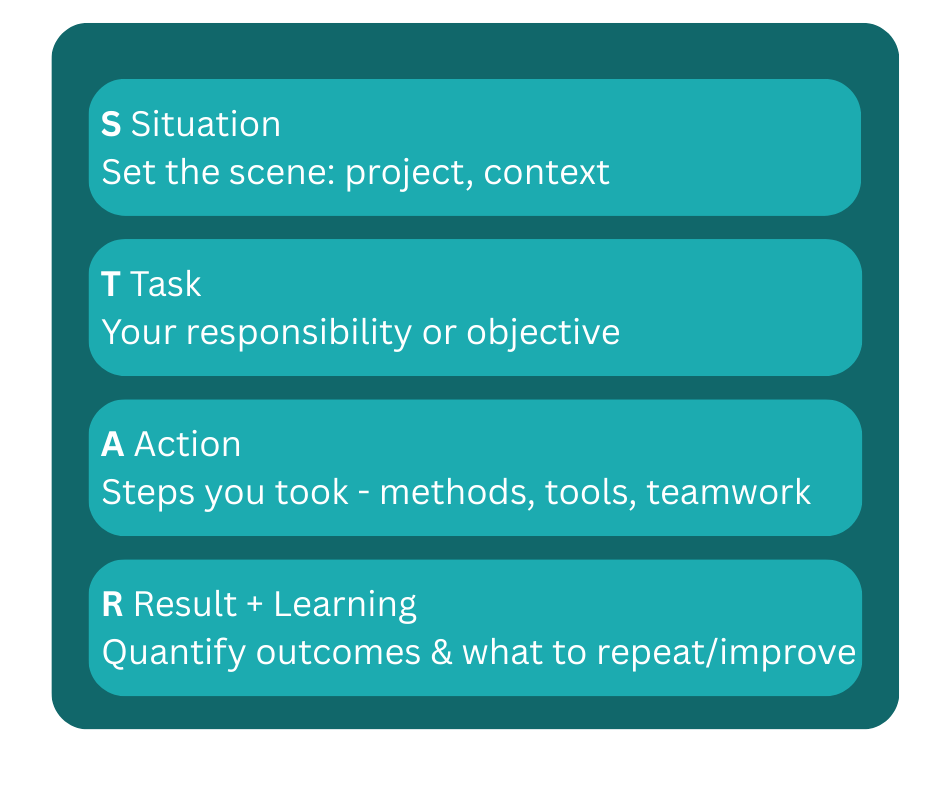
Ask Smart, Specific Questions
Have 3–4 questions that demonstrate curiosity and alignment:
- What would success look like in the first 90 days?
- Which cross‑functional relationships matter most and why?
- If I’m successful, what will be the first problem you’d like me to tackle?
Virtual vs In‑Person: Get the Logistics Right
Virtual interview essentials:
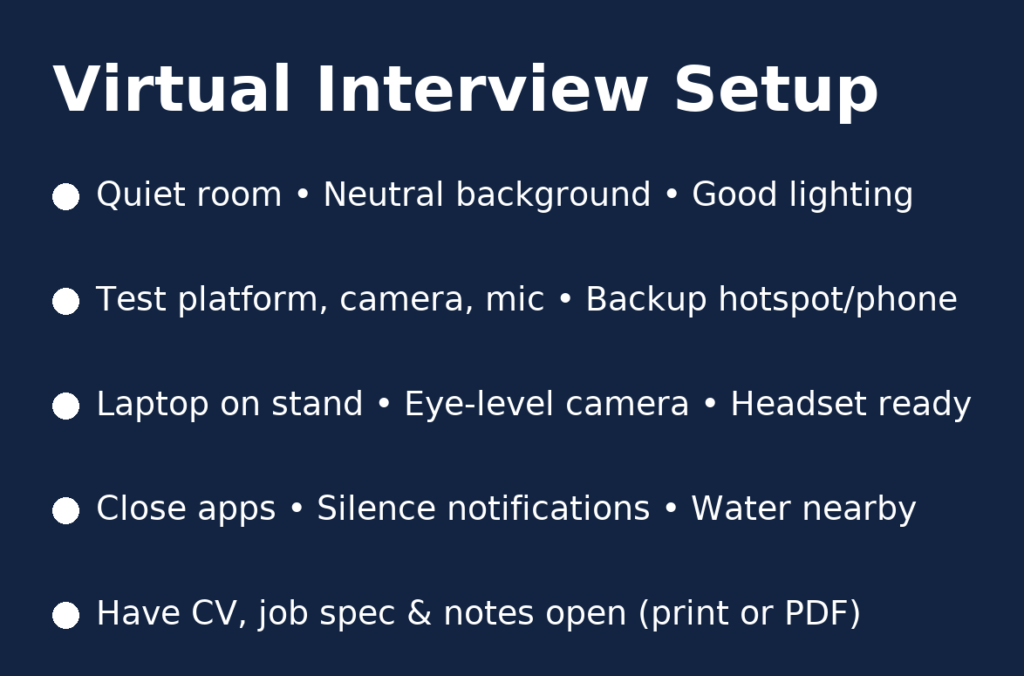
In‑person must‑haves:
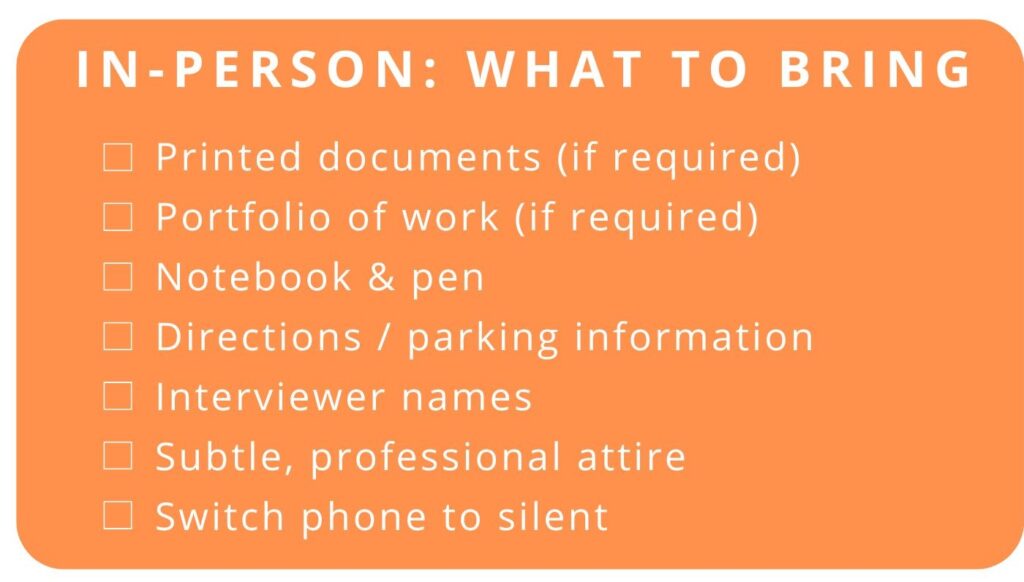
Pack Like a Pro (recap)
- Portfolio/work samples (if required).
- Any documents requested.
- Notebook and pen, water, and subtle mints.
- Names of interviewers, parking/directions, and the HR/recruiter’s phone number.
Follow Up the Same Day
Send a concise thank‑you note that reinforces your fit and keeps momentum if you have the interviewer’s details. Alternatively send a note to your recruiter to pass along to the interviewer. Use this template as an example:
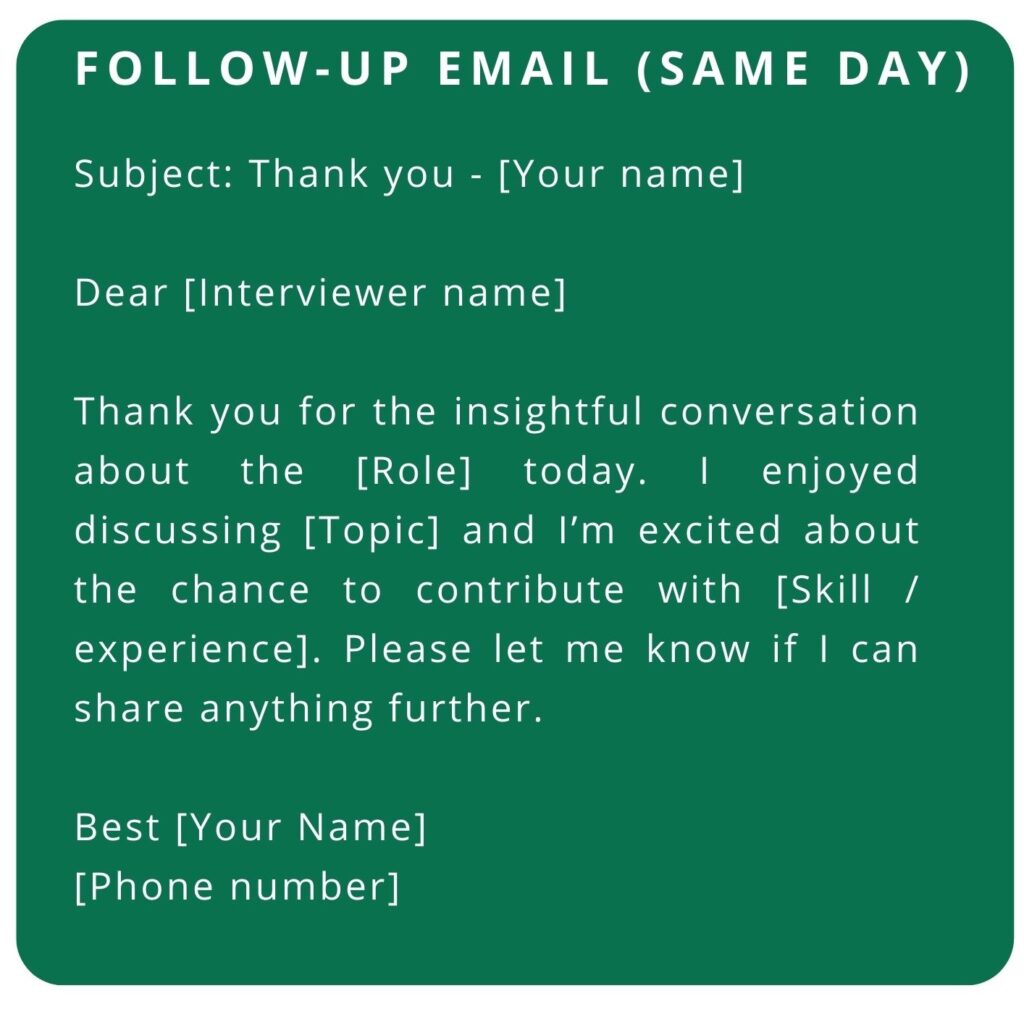
Final Thoughts
Preparation multiplies confidence. Do the research, shape your stories, and control the controllable — then show up as yourself. If you’d like a second pair of eyes on your CV or want to rehearse with a recruiter who understands science roles, we’re here to help.
Explore current roles or get personalised interview preparation support at www.scistaff.co.za

